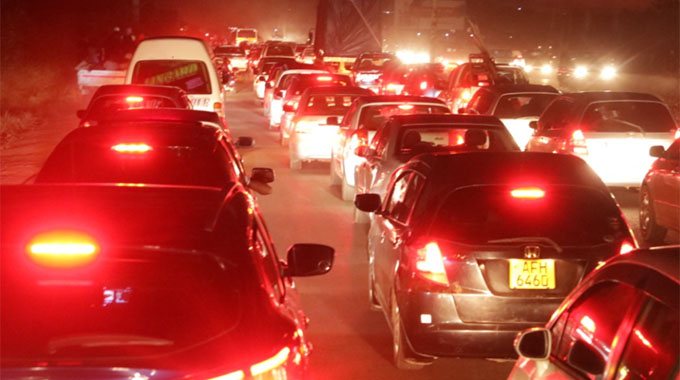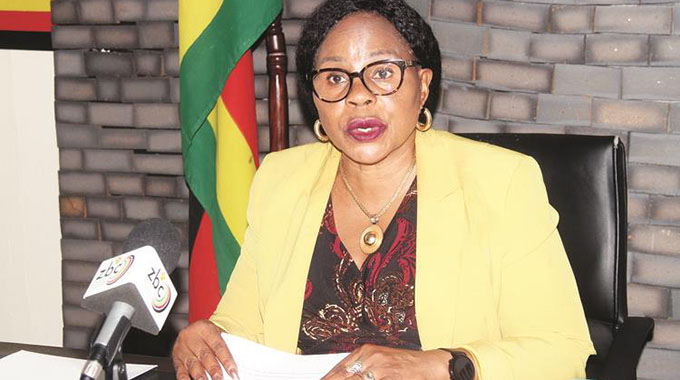Editorial Comment: Implement congestion taskforce plans now

The inter-ministerial taskforce set up last week to tackle traffic congestion in urban areas, with particular emphasis on Harare Metropolitan Province, where congestion is easily the worst in Zimbabwe because of the huge population and very bad colonial town planning, has moved commendably swiftly.
Quite correctly, the taskforce wanted a double approach: rapidly upgrade public transport so that there is significantly less traffic and then work out short-term, medium term and long-term solutions to get the traffic flowing a lot better by eliminating the choke points.
Fairly obviously the recommendations made in the first progress report to Cabinet after just a week’s work were based on hard fact rather than on suppositions or theory.
Taskforce members, who presumably have expertise in many areas, must have physically inspected the streets, intersections, bus terminuses and the traffic. And then they must have applied their joint expertise to crafting solutions.
Now of course, as Cabinet made clear, the first batch of recommendations have to be implemented quickly so that we start seeing results quickly.
Many drivers and truck operators might find it odd that the taskforce stressed the upgrade of Zupco so strongly, giving that plank of the de-congestion programme equal weight to the easing of traffic choke points and getting traffic flowing better.
But the reason is obvious. Every large metropolitan area needs a first class public transport system simply to remove a lot of cars from the streets.
You only need to remember that one large bus can replace up to 50 cars to see this, and to remember what our city centre looked like when public transport was totally built on private cowboy kombis before the resurrection of Zupco.
Authorising the purchase of another 667 buses that can be run under Zupco franchise control, and hopefully sold to Zupco once the restructuring of that company is complete and private investors have been brought in, starts giving Zupco a decent fleet.
But the taskforce did not stop there. It wants Zupco to move from the ad-hoc arrangements needed when it resumed urban operations and wants a considerable upgrade in Zupco operations.
For a start it wants to see the return of scheduled service using timetables, modern electronic traffic management so that controllers can actually see on a large screen what each bus is doing, and near universal use of the tap cards that make payment so much more rapid and efficient.
For a start, the dearth of $5 notes and so many $45 fares need electronic payments.
But as the growing fleet of long buses and the reintroduction of timetables upgrades the main services along arterial roads, especially from high-density suburbs, Zupco can start using its fleet of franchised kombis more effectively to fill the gaps.
Medium and low-density suburbs also need good frequent services. One example: a handful of kombis can replace the mushikashika that now provide the sole service to Avondale and there are many such routes, including routes across suburbs as well as into suburbs, where Zupco kombis would be viable.
Getting councils to clean up terminuses, and this includes signposting loading points, is clearly required. It may need some Government help. And neither Zupco nor the taskforce should forget that as timetables come back these need to be displayed at terminuses and need to be available.
Some bright Zimbabwean should be able to design a simple phone app that allows anyone to see when the next bus to their destination leaves, and from which terminus, and even when the next bus passes their bus stop.
One reason why the pirate kombis and mushikashika flourish in such large numbers is that many would prefer to have an assured trip now rather than wait for an unknown time for a Zupco bus.
The removal of the pirates, both kombi and car, and police have been ordered to intensify efforts to do this, will ease congestion in itself, and so is important, but needs to be backed by a vast improvement in Zupco operations, to slash demand, and a bigger fleet, to take up the load, something the taskforce realised instantly.
The traffic flow component of the taskforce recommendations again make sense. Simply having the traffic lights at major intersections functioning is a good start.
Too many Zimbabwean drivers would rather push into an intersection and block all traffic than take turn and turn about. Proper kerbing at intersections, another quick fix, will stop the cowboys who will do anything, including block traffic, to jump the queue and produce more orderly flows.
Even with functioning lights, rush hour traffic flows are better when there are traffic police deployed to fine-tune the control, and stop the cowboy drivers blocking and jamming a busy intersection as they exercise their rights to pass a green light into a jammed road.
That requires numbers, and so bringing in and training municipal traffic police is another good idea.
The Mbudzi roundabout is now a disgrace. The proposed flyover is required, but is not an instant solution, so the taskforce want dramatic improvement of flows now while plans are prepared for some s
That requires human controls. The roundabout is not as big as it should be, but it should still allow a continuous flow of traffic in two lanes at around 30km/h or even 40km/h.
The biggest problems, besides the impatience of drivers and the poor lane management of most, is fair access. The biggest single problem in the mornings is the need for most Chitungwiza Road drivers to go three-quarters of the way around, blocking off access from Masvingo Road as they do so, and in the evening for those wanting to go into High Glen Road to also go three-quarters of the way round.
Kerbing of the access points, a co-ordinated team of traffic police at busy periods giving everyone fair access, enforcement of lane management and perhaps even dedicating one of the two roundabout lanes to buses and heavy trucks, could turn an impossible mess into just something very irritating.
That could make the roundabout tolerable while work starts on the flyover.
The taskforce also wants far better road discipline by drivers. Besides better signposting it recognised that this requires physical constraints, hence kerbing and island barriers.
Most drivers want fairness at choke points and will obey rules if everyone else has to obey them. But when they see the cheats getting away with it they have little option, but to follow. Backing up the physical constraints by traffic police thus makes a lot of sense.
The taskforce seems to be expert and keen.
They have identified the worst problems and offered solutions that at least ameliorate, if they do not fix, the congestion. Now those recommendations need to be turned into reality, which requires a co-operative effort that includes all drivers as well as ministries, local authorities and the police.









Comments